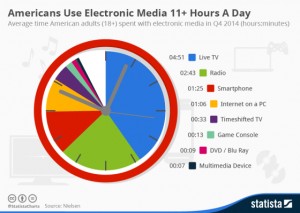In the highly competitive job market of today, recruiters must seek job candidates of all different interests and from all sorts of different backgrounds.
This entails creating compelling job posts as well as interviewing candidates who are actively interested in the position in question. Many times, the candidates who apply for your job post will be a great fit for the position and will be an asset to your company for many years to come. These employees are known as active candidates, due to their concerted efforts to apply for a new job.
However, there is another pool of candidates who should not be counted out when it comes to recruiting new hires: passive candidates.
Passive Candidates: What are They?
Passive candidates are those workers who are not actively seeking a change in their employment status. They are generally happy with their lot in life and see no reason to switch things up.
For this reason (and many others), these employees are often excellent at what they do. They may be an exact fit for the post you have open and you would love nothing more than to have them apply for the job.
But again, they have no interest in changing up their current work situation, and may even be offended if you were to approach them with a job offer (unless you present the opportunity in just the right way).
Why Is It Necessary to Seek Out Passive Candidates?
According to research, over two-thirds of all job candidates are passive candidates. Because these candidates make up such a huge chunk of the candidate pool, it’s important to consider them as you develop your hiring strategy.
These employees are often sought out for positions that require technical skill in times when skilled workers are few and far between. Additionally, many of these passive candidates will be interviewing for management positions and those positions that are crucial to the success of a company overall.
Are Active Candidates Worth Pursuing?
No matter what industry you work in, you will almost always find active candidates. Employees who are desperate to find a new job or switch jobs are constantly reloading their LinkedIn and Indeed pages to find a position just like the one you’ve posted.
Truthfully, many good employees can start as active candidates. It’s good to have people who are excited about finding a new job and want to work for your company. However, it’s important to practice caution when looking into active candidates.
While these candidates may be excellent, they can also come with significant amounts of baggage. They may be looking for a new job because they have trouble getting along with coworkers, have not been performing well in their current position, or for any number of other reasons.
So, there’s no reason to eliminate active candidates from your recruitment process, just understand that these individuals may not offer as much as a quality passive candidate will.
Recruiting Passive Candidates
So, you’ve found a great job candidate, who is not actively seeking a change in employment and would likely respond negatively if you approached him or her about a job; how do you proceed?
You could try calling them directly, but again, they will likely just ignore this effort.
A much better approach is to make use of technology such as email, social media, and a recruitment app, also known as an Applicant Tracking System (ATS).
Opening the conversation through a carefully considered message via email or social media will allow the candidate to realize that:
- 1. You are not a spam robot.
- 2. You represent a legitimate company that has an opportunity available.
From here, the passive candidate can make an informed decision which you should respect, regardless of what they decide.
In many cases, they may decline your invitation and you should not press them any further. They have your contact information and they can get in touch with you if they change their mind.
However, in other situations, you may be able to start a long conversation with a candidate that didn’t even know your job opportunity existed.
This is all made possible through the use of a recruitment app!
Best Practices for Finding Passive Candidates
Make no mistake, it’s much easier to find and interview active candidates. After all, they come to you, not the other way around.
Again, these active candidates may be great fits for positions you have available, and hiring them may lead to a happy outcome for many years to come.
But if you’re not finding the right talent or fit from your active candidates, you need to know how to seek out passive candidates effectively. What follows are some tips for finding and hiring passive candidates for your company.
1. Use Social Media Effectively
Nearly half of the world’s population has at least one social media account, and many people maintain two or more accounts. Depending on your industry, certain social media sites may be the better option for sourcing passive candidates. For example, if you are recruiting for a company that deals with art, you might lean more heavily on services such as Instagram or YouTube.
On the other hand, if you are representing a law firm, odds are your potential passive candidates use LinkedIn or maybe even Twitter more frequently than the other social media apps.
But these are far from hard and fast rules, and you’ll want to explore candidates across all social media platforms. This will, of course, take a considerable amount of effort and the work will be very tedious. You’ll likely spend many hours or even weeks combing through hashtags, keywords, and contacting candidates which end up producing nothing in the end.
However, if you find the perfect candidate, all of this effort will have been worth it in the long run.
2. Rely on Referrals
Many times, you’ll find that referrals can come from within your own company. Every industry is a “small world” in its own right and employees often know of friends and former colleagues who would be a great addition to your team.
Make a habit of discussing company openings with current employees and encourage your staff to communicate with you if they know of someone who might be a good fit for a position. Even if these referrals end up being dead-ends, you’ll still open up a whole new pool of potential candidates.
3. Consider Old Applicants
In the past, you may have interviewed some candidates who were strong contenders for the position, but for one reason or another, they just didn’t make the final cut. Maybe they were too expensive to hire, or maybe they were just slightly edged out by another candidate.
Through the use of a good recruitment app, you’ll have data on these individuals which can be revisited as new positions open up. Just because a candidate didn’t work out before, doesn’t mean they won’t be a great fit for a position in the future.
4. Don’t Neglect Traditional Networking Strategies
There’s no doubt that the internet will be your strongest sourcing strategy for both passive and active candidates. Because we do so many things online, it’s hard to even imagine a time before the internet, when people were only able to connect in person or over the phone. But this period in time did, indeed, exist!
It can feel like in-person meetings have gone the way of dinosaurs, but this is not at all accurate. Some of the best candidates are those that are found in person: at industry events, continuing education conferences, or even just out at an unrelated place such as a bar or restaurant.
You should always be ready to meet a potential candidate, no matter where you are. Sometimes you might strike up a conversation with a stranger and realize that they are looking for the exact position you have open. Even if the person you’re talking to isn’t looking for work or isn’t a good fit, they may know someone who is.
Approaching Passive Candidates Without Being Annoying
It’s been mentioned before in this article, but it bears repeating: passive candidates will not approach you, you have to meet them where they are. These people do not know that your job exists and, honestly, they might not even care.
If you come off as a push salesman, you’ll not only sour potential candidates against you, you may even develop a poor reputation in the field. This is the very last thing you want to have happened, as even one bad interaction can make you seem like a huckster to any current or future job seeker.
Once you get the initial buy-in, or at least find a candidate who is willing to talk with you, suggest a meeting in a neutral, relaxed space. In normal times, this might include a coffee shop or casual diner. In times where in-person meeting is prohibited or discouraged, this meeting might have to happen over video conference.
During this meeting, you’ll want to give the candidate the “red carpet” treatment. This means paying for whatever they order at the restaurant, meeting at whatever time is convenient for them, and generally making them feel special and showing that you are truly interested in them as a job candidate.
Emailing Passive Candidates
We live in an age of information overload. If you’re like many people, you get hundreds of emails every day, most of which are filled with unnecessary details or spam.
Therefore, if you’re going to email or message a passive candidate, you need to be convincing and compelling immediately, or your message will quickly find its way to the trash.
An email to a passive candidate should include, at a minimum, the following elements:
- Upbeat, positive tone. You need to demonstrate that you are passionate about your company and that your company is passionate about hiring the right employees. People want to work with others that share their values and strive to produce a great product or service. The tone of your email shouldn’t feel like a boring presentation that the candidate has to struggle through. Rather, they should be invigorated by your email!
- Appeal to the specific candidate. This can sometimes be tricky to accomplish, depending on the candidate in question. But you’ll want to do a little digging and find out information on your passive candidate. By combing through their social media accounts and other online presences, you can discover some things that the candidate is interested in outside of work and industry-related topics. This will provide a sense of sincerity and will encourage the person to, at a minimum, follow up with you about the job.
- Short and to-the-point. Again, with hundreds of emails coming in each day, no candidate wants to read a long, meandering manifesto about a company. They want to hear facts and statistics that appeal to them and why they should consider leaving their current company. We only have so much time to spend on these things in a day, make sure your email is worth their time commitment.
- Explanation of why they should work for you. Leaving one job for another is not only hard to do logistically, but it’s also risky for the candidate. If this person leaves the company at which he or she currently works to come work for you, they have weighed the risks and believe that employment with your company will be better for them in the long run. If it ends up being a bad fit, for one reason or another, the employee could have trouble finding another job or may be labeled as someone who jumps between companies without demonstrating any loyalty. Avoid this situation at all costs by laying your cards on the table immediately through a well-worded initial email.
Critically, you must remember that the worker pool of today is much different than that of past generations. Years ago, companies could sacrifice certain benefits and values if they offered a high enough salary for employees.
This is no longer the case. The job candidates of today are highly aware of social, environmental, and other issues related to employment. Some employees will even turn down higher-paying jobs in favor of ones that more closely match their values.
Salary and benefits are certainly important considerations and should not be overlooked. However, it’s important to remember that candidates place more emphasis on other issues than they did in the past.
Never Sacrifice Ethical Hiring Practices
It wouldn’t be inaccurate to say that the world of recruiting is a dog-eat-dog world. There is certainly heavy competition in the field and every company wants to find the best candidates from a small pool.
That being said, you should never act unethically when recruiting, interviewing, communicating with, or hiring candidates. This is true whether the potential employee is an active or passive candidate.
If you practice unethical behavior sooner or later, your industry is going to find out. When this happens, the best-case scenario is that your reputation is tarnished across the field and no quality candidates would ever consider working for you. The worst-case scenario is that legal action is taken against you and your company is forced to confront a tricky charge related to ethics.
The best advice is, to be honest, straightforward, and open about your hiring practices. Don’t lie to candidates, other companies, or fellow recruiters. Do what you know is right and you’ll eventually find your perfect candidate.
Using a Recruitment App
The process of finding and hiring passive candidates can seem daunting. There’s no sense in sugar-coating it: passive candidates require a ton of work and time from recruiters.
Luckily, through the use of an effective recruitment app, recruiters can find passive candidates more easily and manage their hiring portfolios. Recruitment apps are some of the best pieces of technology available to recruiters, enabling them to find quality candidates, build career pages, and otherwise streamline the hiring process.
Conclusion: Are Passive Candidates Worth the Effort?
After reading everything in this article, you may be wondering if the “juice is worth the squeeze”, so to speak. To recap, recruiting passive candidates is a difficult task, but one that can lead to phenomenal long-term results if implemented successfully.
So, in the end, it’s up to you whether you rely more on passive or active candidates. Active candidates are undoubtedly easier to recruit and setting up interviews can be done more on a company’s terms. These potential employees may turn out to be great fits for available positions and hiring an active candidate could lead to a long-term, happy outcome for everyone involved.
However, passive candidates are out there, and they are just waiting for the right opportunity to change companies or positions for something that will bring more value to their careers and lives. These workers are highly skilled and can bring a lot of value to your company. It takes just the right tactics to recruit these individuals, but you can win them over with the right approach and the willingness to commit extra effort and time to the venture.
Begin leveraging the best available applicant tracking software, your company’s growth will be easy to manage. Start your free trial today!
Business & Finance Articles on Business 2 Community(36)
Report Post





